
Darkling beetle is the common name of the large family of beetles Tenebrionidae. The number of species in the Tenebrionidae is estimated at more than 20,000 and the family is cosmopolitan in distribution.
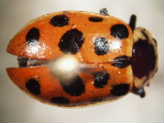
Hippodamia tredecimpunctata, commonly known as the thirteen-spot ladybeetle, is a species of lady beetle.
The family Archeocrypticidae is a small group of beetles with no vernacular common name, though recent authors have coined the name cryptic fungus beetles. Adults and larvae seems to be saprophagous and are often found in plant litter. Worldwide, about 10 genera and 50 species are found, most species are pantropical. Enneboeus caseyi has been recorded from the American South, Central America, and Mexico. About 20 species are found in Australia, in the genera Enneboeus and Australenneboeus.

Calathus is a genus of ground beetle native to the Palearctic, the Near East and North Africa. There are at least 190 described species in Calathus.
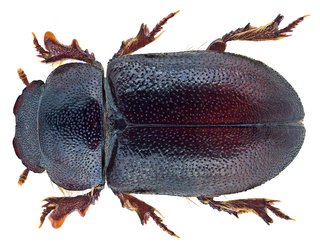
Cheirodes is a genus of darkling beetles in the Melanimini tribe. It was formerly known as Anemia until 1973, when T. J. Spilman determined Anemia to be a synonym of CheirodesGéné, 1839.

Bothrideridae is a family of beetles in the suborder Polyphaga. They are known commonly as the cocoon-forming beetles or dry bark beetles. They occur worldwide with most native to the Old World tropics.

Chrysolina grossa, the red leaf beetle, is a species of broad-shouldered leaf beetles belonging to the family Chrysomelidae, subfamily Chrysomelinae.

Accanthopus velikensis is a species of darkling beetle belonging to the family Tenebrionidae subfamily Tenebrioninae.
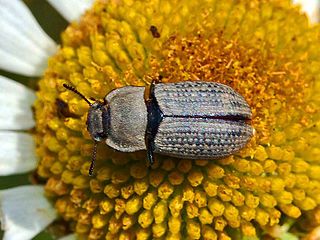
Gonocephalum assimile is a species of darkling beetle in the family Tenebrionidae.
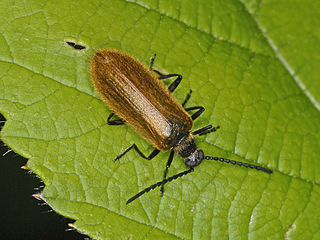
Lagria is a genus of beetles in the family Tenebrionidae.

Helops rossii is a species of darkling beetles in the subfamily Tenebrioninae.

Phaleria is a genus of darkling beetles belonging to the family Tenebrionidae.
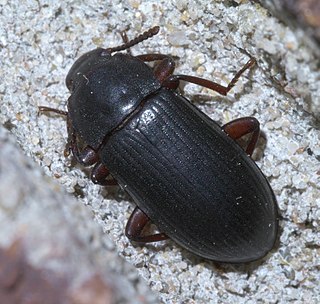
Tenebrionini is a tribe of darkling beetles in the family Tenebrionidae. There are about six genera and eight described species in Tenebrionini.

Asidini is a tribe of darkling beetles in the family Tenebrionidae. There are about 8 genera and at least 40 described species in Asidini.

Helopini is a tribe of darkling beetles in the family Tenebrionidae. There are at least 3 genera and 20 described species in Helopini.

Ulomini is a tribe of darkling beetles in the family Tenebrionidae. There are at least two genera and about eight described species in Ulomini.
Eulabini is a tribe of darkling beetles in the family Tenebrionidae. There are at least three genera and about five described species in Eulabini.
Xerolinus is a genus of darkling beetle. It consists of approximately thirty species found in the West Indies. Michael A. Ivie and Charles J. Hart named and circumscribed the genus in 2016.

Mimopeus elongatus is a species of darkling beetle in the subfamily tenebrioninae, first described by Brème in 1842, who considered it a type of Celibe.
Bius is a genus of beetles belonging to the family Tenebrionidae.
















